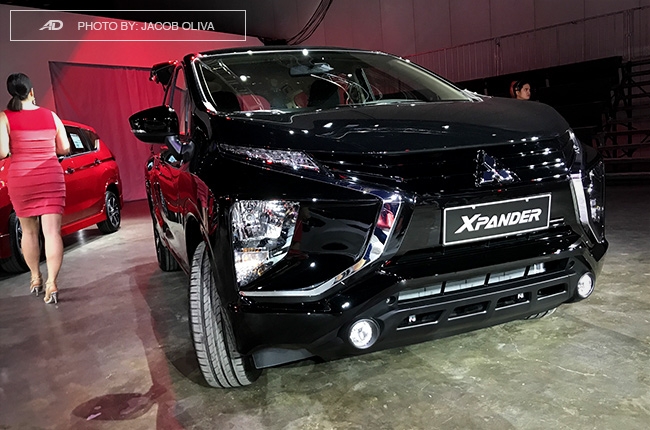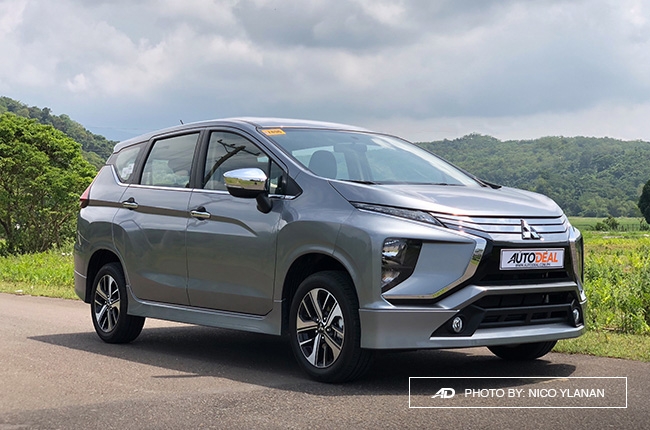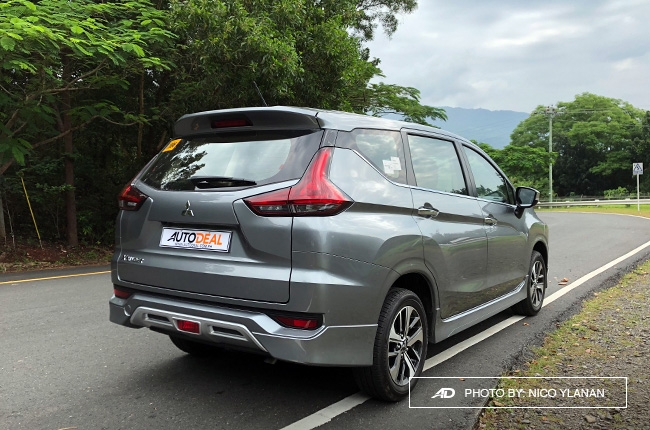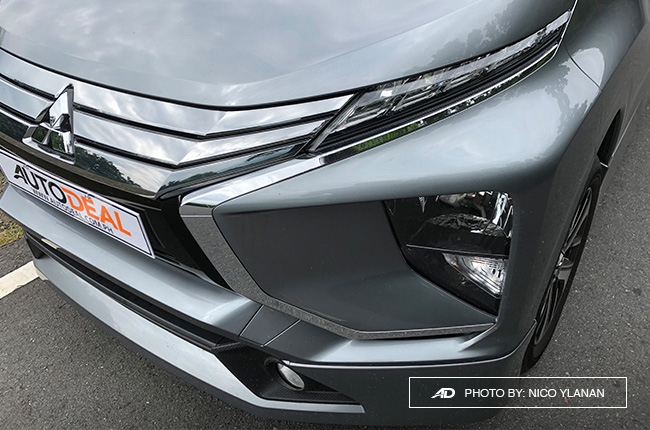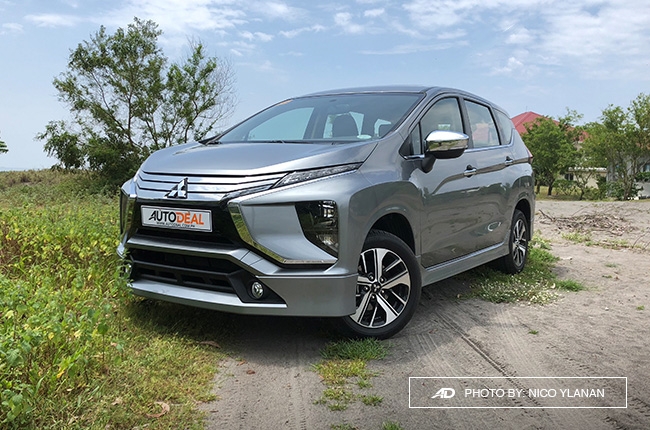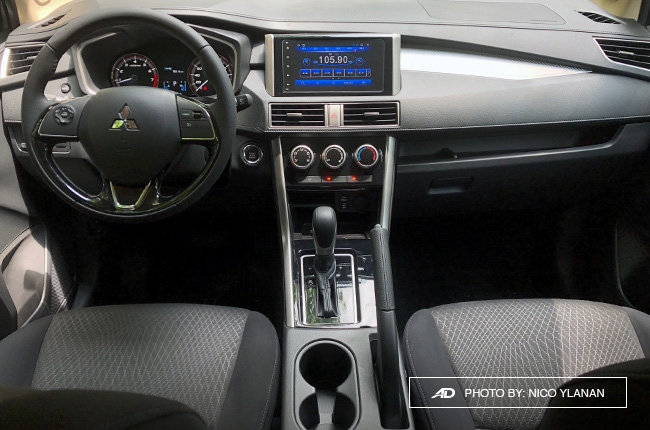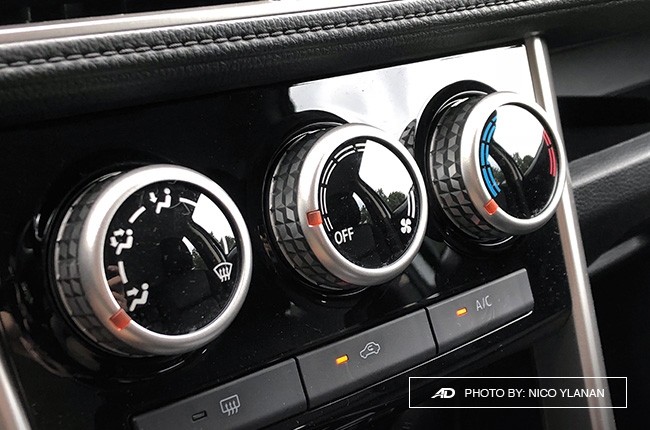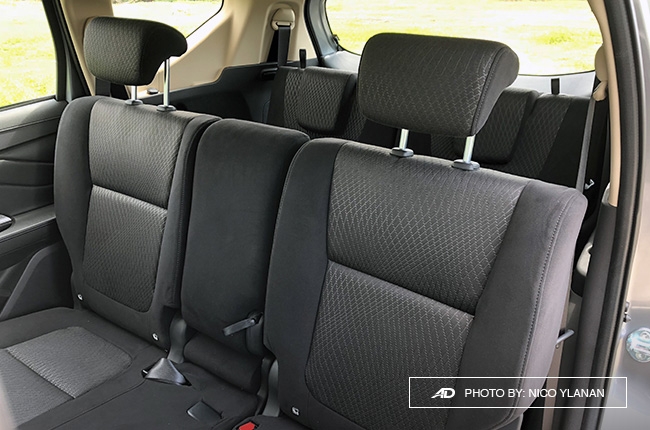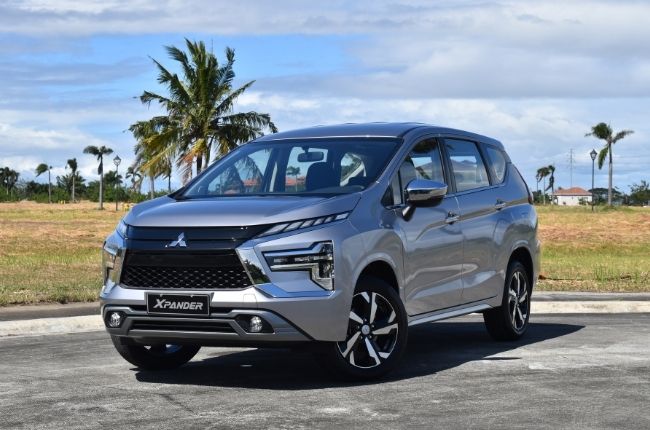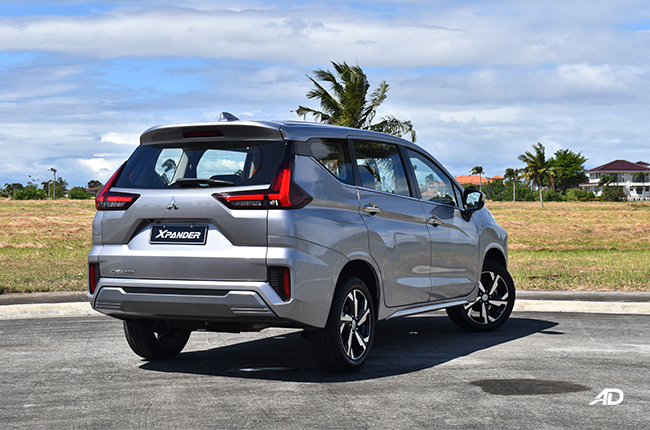
The Mitsubishi Xpander is a household name in the Philippines. Every family probably considered getting one at some point after the model was first launched in 2018. It was just a perfect storm of space, features, and price. Filipinos were very receptive to Mitsubishi’s then-new model.
So let’s take a little trip through time and see just how far the Xpander has come. From its first launch all the way to its current update, let’s also see whether the old one stacks up on today’s roads, and let’s see whether the new one does well enough to continue the legacy of the model.
In the beginning
The model was first unveiled in 2017. Our records go as far back as August 10, 2017, when the model first debuted in the ASEAN region. It took about a year to bring the model into the Philippines. The model was launched in the first quarter of 2018 for the Philippine market. It was positioned as a seven-seat multi-purpose vehicle, or what is otherwise known as an MPV. The model was one of the first real efforts to make the segment a little more enticing to buyers. Up until this point, Mitsubishi hasn’t had a seven-seat MPV to sell, and other competitors were already first to market their own models like the Ertiga was still available, but looking a little boring, and the Innova was present, but some people thought it was too expensive, the Avanza was still in the market, but it wasn’t exactly a car that people were lining up to buy at the time, unlike now with its more refined chassis. Honda had the Mobilio, which was pretty much the best in its class at the time. The more expensive BR-V was also available after a few years, but the model didn’t sell all too well, with interior space being one of the models’ shortcomings.

The Xpander found its place perfectly nestled in between the Avanza and the Innova. With a more refined platform compared to its rivals, and with more “premium” trimmings compared to the rest. Mitsubishi thoughtfully raised the bar and arguably redefined the segment in that the Xpander was competing. It was a standard that most manufacturers, and even Toyota couldn’t ignore.
Design
Back then, the Xpander was a breath of fresh air in its segment. The Suzuki Ertiga and the Honda Mobilio were probably the best in their class at the time with a unibody chassis and just enough space for seven people. Given that these were the models that the Xpander was closest to in terms of specifications, there were a few enhancements that were made, the chief of which was to make the car bigger and better riding than the rest of its rivals. Before we get into the driving and the other fundamentals of the car, let’s look at the exterior look of it in detail.
There was no going around it, it’s either you loved it or you hated it. The model wasn’t exactly a love at first sight type of thing for a few people, but it was for a good majority of the car-buying public. Many spoke about the design of the Xpander using their wallets, happily paying up for a car that some refer to as a little garish or a little “too out there” in terms of design.

However, given the landscape of the market, and given how Mitsubishi had just launched the new Montero Sport, terms like “Baby Montero” or mini SUV started popping up around the internet, prompting people to take a look and see the resemblance. Overall, and in a bubble, the Xpander isn’t too great looking by today’s standards. This is in part due to the rest of the industry catching up with what consumers want. The modern aesthetic did set it apart then, and it caught the eye and attention of many car buyers when it was first introduced. However, you only need to take a look at the rest of the competition at the time to understand how the Xpander did so well. It was new, it was different, and it was unique and by far one of the best-looking MPVs in its segment at the time. Now, however, the old design is a little dated, and the new Xpander does fit the bill when it comes to competing in the segment. Although, that’s not to say that the original model is totally obsolete in terms of design.
Interior
What’s held up pretty well over the years is the Xpander’s interior. We won’t say that it is timeless, but you definitely can’t put an age on practicality and space, and the original Xpander had a ton of those two things in tow. For starters, the design and the layout of the interior stayed largely the same. You get tons of storage space and cubby holes throughout the car. There are pockets and even trays for you to put all of your items in. Even your rear passengers get an organizer behind the front passenger seat and the driver’s seat. Even the rear seats were surprisingly spacious for its time back then.
The one downfall of the original Xpander was its material choice. Mitsubishi, at the time, wasn’t well-known for its interior trimmings, so the Xpander suffers from a lot of plastics and not enough soft-touch materials. Although, it goes without saying that the interior has stayed quite durable over the years, and it’s still quite modern even by today’s MPV standards. Though, the model does have a bit of a utilitarian look, Mitsubishi did well to break up the bog-standard surfaces with some textures and silver trimmings all over the cabin. The Xpander wasn’t too luxurious back then and it certainly isn’t too premium now, but given that the landscape of seven seaters had so-so cabins, the Xpander was a nice breath of fresh air.

Cargo space still holds up today. The Xpander has one of the most usable loading bays to this day, and it has some great space management solutions that other manufacturers like Honda or Toyota, have yet to engineer around. The Xpander shares its flat-folding rear seats with the Montero Sport. The result is a slightly higher loading lip, but a totally flat and nearly square cargo area. The maximum cargo volume of the Xpander stands at over 1,630 liters with all the seats folded down, a number that continues to be one of the leaders of the pack.
Comfort

In its class, and at the time, the Xpander had the best ride comfort, drive comfort, and overall ergonomics, at least in our opinions. Comparing the Xpander to the field back then, we can safely say that the model was rather ahread of its time. The ride wasn’t half bad for the price tag, and the refinement was pretty great comparing to models like the Mobilio, Ertiga, and especially the Avanza. Bumps and potholes were handled well, and the steering was rather confident, enough for us to turn without really thinking about how the car would respond.
When talking about noise vibration and harshness, the Xpander did quite well in this area, cutting through the air without much turbulence, and remaining stable in the face of larger vehicles zipping by on the highway.
The great thing about our take on the original Xpander and our current take on the model now is still the same. Mitsubishi got the formula for the Philippines right back then, and it’s still competent until now.
Technology

Sadly, this is one area that the Xpander fails with regard to modern vehicle standards, but something that Mitsubishi promptly addressed following the most recent model. The original Xpander had a touchscreen infotainment system that came in at about seven inches, but the unit’s capabilities were quite sparse. We can’t knock it then because the category didn’t have a best-in-class infotainment system at the time since basic head units were pretty much the norm. Even so, the infotainment system didn’t have quite a lot going for it. Some users over the years reported that there were a few bugs that popped up from time to time, resulting in the head unit freezing and requiring a restart. Apart from that, the audio system was middling in terms of quality, and the screen itself didn’t get too bright and wasn’t too clear.

The new Xpander addressed this by adding Apple CarPlay and Android Auto, which eliminated the need for drivers to add a car mount in order to view their navigation apps like Waze and Maps. However, things weren’t all bad as we assume that many FIlipinos at the time just needed Bluetooth to be on their merry way. Failing that, an auxiliary jack would have been a good infotainment feature to have as well. Though, as with everything, phones started to ditch the 3.5mm headphone jack, so cars eventually followed suit. There was a USB port back then, but it had iPod connectivity, which left Android users feeling the sting of not going with the fruity phone brand.
Perhaps the hottest feature to have back then was a reverse camera, and the Xpander had that in tow, well at least on the top-of-the-line variant. Eventually, Mitsubishi would further standardize the reverse camera for a good chunk of its lineup, but 2018 was a different era. A reverse camera was something of a luxury at this price point, and many car buyers were already happy to just have this singular camera even if they had to pay for it.
Safety

Safety standards have progressed a lot throughout the years, thanks to the ASEAN NCAP heightening its testing standards and thanks to manufacturers adhering to the said standards. The Xpander got high marks for crash safety, and currently, the model got a four-star rating back in January 2018, which carries over to the current generation.
As for the features that Xpander had back then, we got two airbags as standard, ABS with EBD, stability control in select trims, emergency stop signal, and also ISOFIX child seat anchors. While it wasn’t a breakthrough set of features like the advanced driver assistance features we see today, it was just enough. No other car at this price point has yet offered more advanced safety features, so most Filipinos weren’t so savvy about the concept of a radar on their car, at least not at the time.
Does it hold up, however? We feel that the original Xpander was just enough at the time. It wasn’t class-leading, or under-equipped, it just joined the rest of the pack with a par-for-the-course set of features. Now, it's still good, but just like other Japanese brands, there aren't too many class-leading features in the current model seeing as Mitsubishi might have taken a price-sensitive approach to the model.
Driving and Handling

Equipped with a 1.5-liter naturally-aspirated four-cylinder gasoline motor, the Xpander made 103 hp and 141 Nm of torque, which is by no means a trailblazer of an engine. The powertrain was just decent, and it didn’t shock anyone especially since it was either paired to a five-speed manual or a four-speed traditional automatic. The dated automatic transmission wouldn’t be the model’s Achilles heel, however, since we experienced a relatively smooth acceleration coupled with decent pickup even if the engine wasn’t as powerful as other models like the Mobilio and the BR-V. With decent pickup and just an okay drive, the Xpander didn’t give off any sporting intentions, but it was decent when it came to everyday driving due to the fact that it was neither unresponsive nor was it a handful to drive.

Handling was good on the Xpander, probably a bit sharper and a little lighter than its competitors. The electronic power steering in the original and the current-generation Xpanders are still light by today’s standards, and that means that darting for gaps in traffic or going lock-to-lock while parking was easy for drivers. Following that, steering felt quite decent for the size and height of the car, with the suspension having just enough travel and stiffness to corner safely and stably.

The platform was good enough for Mitsubishi to continue using the setup all the way to 2022 when the new Xpander was launched.
Fuel economy

In this segment of vehicles, Suzuki reigned supreme when it came to fuel efficiency, but the Xpander did give its rival a run for its money when it debuted. Mitsubishi was proud to send members of the media out on drives then ask what was the best consumption rating that they got. Back then, the model would handily achieve up to 21 km/L in the manual transmission variant, and 22.94 km/L in the automatic transmission variants.

During our review, the Xpander managed to do about 16 to 17 km/L on the highway, while the city traffic brought the figure down to about 9 in bumper-to-bumper conditions. The result is quite decent, and it continues to do so, given that we’re still getting about the same figures in the modern incarnations of the model.
Price and Verdict

Back when it was first launched in the Philippines, the Xpander’s price started at P885,000 for the GLX MT variant, then the model topped out just a little over the seven-figure mark priced at P1,060,000. Now, however, it’s a different story. Cars have been getting more and more expensive over the years, and now the model starts at P1,068,000 and tops out at P1,198,000. Filipinos who bought the original Xpander back then were some of the lucky ones because they got a great deal for the model, especially during the pre-excise era.
You do get more for your money now. The platform remained the same but Mitsubishi added a few refinements that allowed the Xpander to compete in the ever-progressing MPV segment of the Philippines. Buying into the nameplate is still a good value proposition based on the fact that other brands with their MPVs are also hovering around the same price point.
So is the Xpander still worth keeping? Perhaps it is. The biggest drawback of the old model was made even worse over time, the infotainment system. It’s dated and not so great in the modern era of smartphone-connected-everything. However, the platform is still decent, the fuel economy is still noteworthy, and the practicality it offers is as timeless as ever. Conversely, if you’ve been Xpander-less all these years, perhaps snagging a second-hand model in our Used Cars section would be a great idea and a cost-effective one at that. Otherwise, if you’re looking to purchase new, the Xpander remains a solid option in the MPV segment. We feel that the new model is the complete package and what the Xpander should have been when it first launched so it could be miles ahead of anything else in the segment. However, the price was the Xpander’s greatest asset back in 2018, and its sub-one-million-Peso starting price was undoubtedly more head-turning and exciting than the car’s measly power figures suggested. Now that the model starts at over P1,000,000, is it still a great buy? We think that it’s worth considering especially with an all-new design, and updated features. Is it a better deal than the 2018 price of the original Xpander? In a way it is, but it’s nowhere near as “sulit” as the original. Though, it would probably be more expensive to build a time machine and get the Xpander than to just get the new one.
Latest Features
-
How to prepare your car for the Holidays / Featured Article
Here are our handy tips on how to keep you on the road and stress free this holiday season.
-
An all-electric future: The Porsche Macan Electric / Featured Article
Porsche’s Macan goes all-electric; it’s a new beast with an electrified heart, yet unmistakably Porsche in performance and spirit.
-
Which Kia should I buy? / Featured Article
We’re here to help you decide which Kia vehicle is best for you, whether it’s a sedan, crossover, or minivan.
Popular Articles
-
Electric Vehicles in the Philippines for under P1 million
Jerome Tresvalles · Aug 19, 2025
-
Top 3 Cars For Every Lifestyle—What Cars Are Right For You? | Behind a Desk
Caco Tirona · Apr 24, 2024
-
5 Tips to Maximize Fuel Efficiency
Jerome Tresvalles · Sep 09, 2024
-
Five driving habits that are draining your fuel tank
Jerome Tresvalles · Jun 24, 2025
-
Can engine braking harm your engine?
Jerome Tresvalles · Sep 11, 2025
-
Do electric cars even need maintenance?
Jerome Tresvalles · Oct 23, 2024
-
Best vehicles for an active outdoor lifestyle
Shaynah Miranda · Jul 25, 2024
-
How to drive different types of vehicle transmissions
May 23, 2024
-
5 easy ways to keep your car interior clean
Allysa Mae Zulueta · Nov 15, 2021
-
How to survive Metro Manila traffic
Earl Lee · Aug 16, 2022




